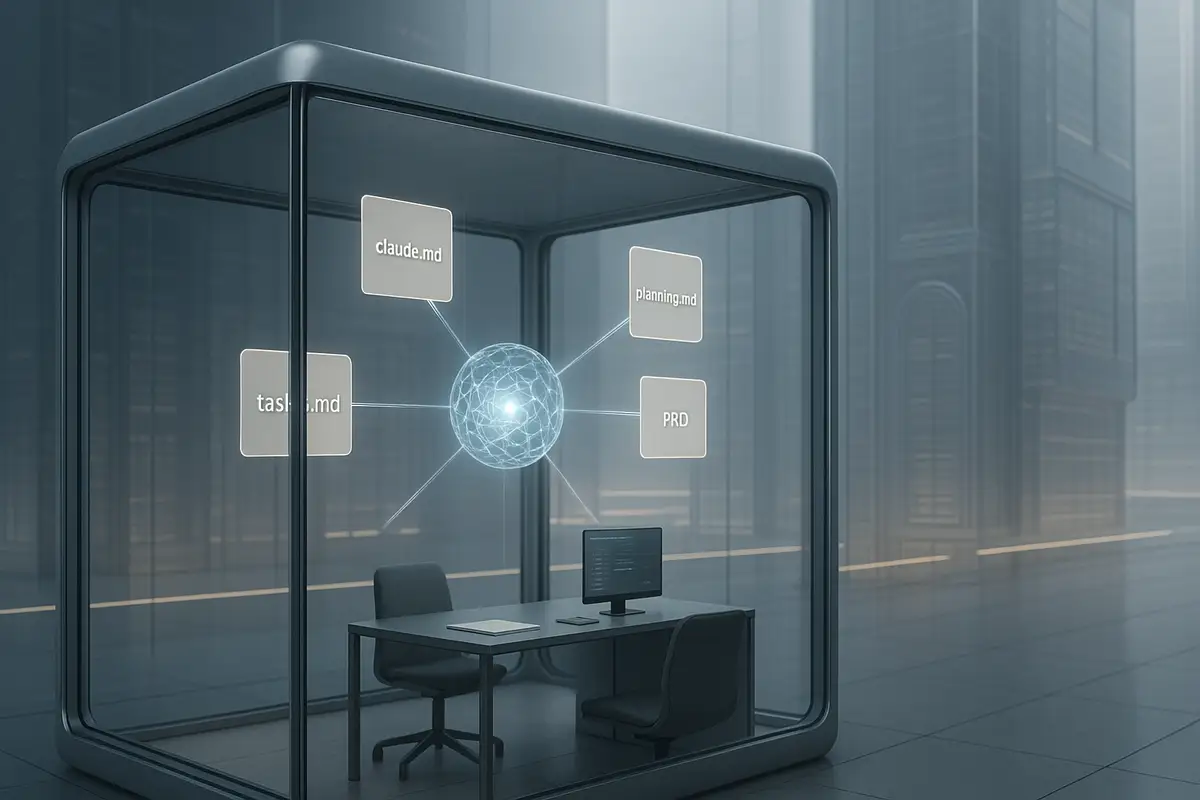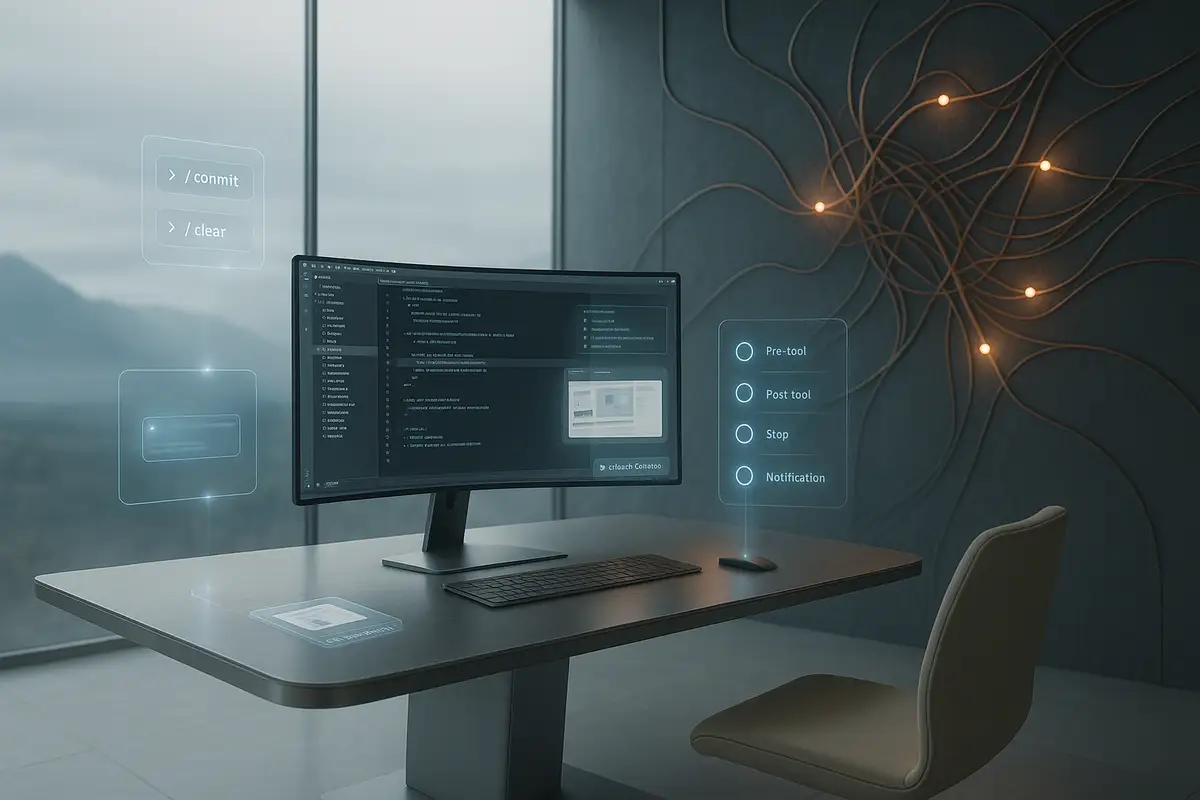Google Squints. Trump Taxes Air.
San Francisco | December 9 Sergey Brin is back with glasses that can't handle a sunny window. Google announced
Amazon's new Kiro IDE forces developers to plan before coding, challenging the 'vibe coding' era. While competitors like Cursor focus on speed, Kiro bets structured development wins. The shift suggests the AI coding market is maturing beyond quick hacks.

💡 TL;DR - The 30 Seconds Version
👉 AWS launched Kiro, an AI IDE that forces developers to create specs and plans before coding, challenging the "vibe coding" approach.
📊 Cursor achieved $200 million in annual recurring revenue within its first year, showing rapid growth in the AI coding market.
🏭 Kiro's unique features include automated specs that transform prompts into requirements and hooks that automate quality checks and documentation.
🌍 The tool addresses technical debt created by AI coding tools that let developers "prompt and pray" without documenting assumptions or trade-offs.
🚀 The shift signals AI coding market maturation from speed-focused tools to those emphasizing maintainability and production-ready workflows.
⚡ Expect Cursor and Claude Code to rapidly add planning features as competition pushes the industry toward structured development approaches.
The honeymoon with "vibe coding" is ending. Amazon's new Kiro IDE makes this clear with its demand for specs, planning, and structured development. While developers have spent two years enjoying the magic of prompting their way to working apps, Kiro asks a different question: What happens when you need to ship software that works?
Kiro takes the opposite approach from tools like Cursor or Claude Code. Instead of letting you dive straight into coding, it makes you plan first. The tool turns simple prompts into detailed requirements documents, design specs, and task lists. It's spec-driven development, not the prompt-and-pray approach that defined the first wave of AI coding tools.
This shift reflects broader changes in the AI coding market. The industry has moved beyond the initial excitement of AI autocomplete to tackle real production challenges. As one developer testing Kiro noted, the tool "takes control of the whole workflow, from design to testing" rather than just helping with individual coding tasks.
Kiro's approach shows where Amazon thinks AI development is headed. The tool includes two key features that set it apart from competitors: specs and hooks. Specs force developers to think through requirements, create design documents, and build detailed task lists before writing code. Hooks automate quality checks and documentation updates as work progresses.
This isn't just about better organization. It's about acknowledging that most AI coding tools create technical debt. When you prompt your way to a working feature, you rarely document the assumptions the AI made or the trade-offs it chose. Kiro forces those decisions into the open through its spec-driven workflow.
The tool's hooks system addresses another practical problem: keeping code quality consistent across teams. These event-driven automations can update tests when components change, refresh documentation when APIs evolve, and run security scans when files are saved. It's the kind of discipline that separates weekend projects from production systems.
The competition in AI coding tools has reached a point where standing out matters more than raw capability. Cursor achieved $200 million in annual recurring revenue within its first year. The AI coding market is growing rapidly as companies recognize the productivity gains. Claude Code is gaining traction for complex development tasks. The market is no longer about proving AI can write code—it's about proving it can write code that works in production.
This competitive pressure is pushing tools toward specialization. Cursor focuses on IDE integration and familiar workflows. Claude Code emphasizes autonomous agents that can handle complex, multi-step tasks. Kiro positions itself as the structured alternative for teams that need process and documentation alongside code generation.
Kiro's approach to model flexibility could shake up pricing dynamics. Unlike tools locked to specific providers, Kiro plans to support multiple language models. This opens the door to cheaper Chinese AI providers like DeepSeek and Qwen, which cost a fraction of Western alternatives. If Kiro makes it easy to switch between models, price competition could force down costs across the entire market.
The timing suggests Amazon sees an opportunity in the market's evolution. Other tools focus on speed and convenience. Kiro thinks developers will want structure and maintainability instead. Amazon knows that many AI-generated projects turn into "unmaintainable messes".
Cursor and Anthropic won't ignore Kiro's challenge. Both companies have already started adding planning features to their tools. Cursor's recent updates include better task management and project organization. Claude Code has introduced planning modes and better context handling for large codebases.
The shift toward structure isn't just coming from tool makers. Many developers have already built their own spec-driven workflows around Claude Code. They create detailed prompts, maintain context files, and use structured approaches to break down complex projects. These developers realized that good AI coding requires discipline, not just better models.
The question is whether these established players can add structure to tools designed for speed and flexibility. Cursor's strength lies in its seamless VS Code integration and familiar interface. Adding heavy planning workflows might alienate users who chose it for its simplicity.
Anthropic faces a different challenge. Claude Code's terminal-based approach appeals to developers who want powerful, autonomous agents. But Kiro's IDE-based workflow might prove more accessible to teams that need collaboration and project management alongside code generation.
The real insight behind Kiro is that speed without structure creates problems. Developers who vibe code their way to working prototypes often struggle to maintain, extend, or deploy their creations. The AI makes assumptions, takes shortcuts, and creates dependencies that only become apparent later.
Kiro's spec-driven approach addresses this by making AI decisions explicit. When the tool generates requirements documents and design specs, developers can review and modify the AI's assumptions before work begins. This front-loaded planning prevents many of the issues that plague AI-generated code.
The hooks system handles this discipline automatically. Developers don't need to remember to update tests, documentation, and security checks - the tool does it for them. Good software development needs consistent habits, not just smart prompts.
Kiro represents a broader trend toward specialization in AI development tools. The first generation of AI coding assistants focused on proving the concept. The second generation, exemplified by tools like Cursor and Claude Code, focused on making AI coding powerful and accessible. The third generation, which Kiro represents, focuses on making AI coding sustainable and maintainable.
This evolution mirrors the broader software industry's maturation. Early development tools focused on raw functionality. Modern tools emphasize process, collaboration, and maintainability. AI coding tools are following the same path, moving from impressive demos to production-ready workflows.
The shift also reflects changing user needs. Early AI coding adopters were often individual developers or small teams willing to trade structure for speed. As AI coding moves into larger organizations and more critical applications, the need for process and documentation becomes essential.
The competition between Kiro, Cursor, and Claude Code will likely drive rapid innovation across the space. Each tool represents a different philosophy about how AI should assist development. Cursor emphasizes integration and familiarity. Claude Code focuses on autonomous capability and complex problem-solving. Kiro puts structure and maintainability first.
The market will ultimately decide which approach wins, but the early signs suggest room for multiple approaches. Different types of projects and teams will benefit from different tools. The key is that all three approaches acknowledge that AI coding has moved beyond simple autocomplete to tackle fundamental questions about software development process.
Expect to see rapid feature development across all platforms as they respond to each other's innovations. Cursor will likely add more planning and project management features. Claude Code will probably introduce better collaboration tools and project structure. Kiro will need to prove that its structured approach doesn't sacrifice the speed and flexibility that make AI coding appealing.
Why this matters:
• The AI coding market is maturing beyond the initial "prompt and pray" phase toward tools that emphasize structure, documentation, and maintainability over raw speed
• Amazon's bet on spec-driven development suggests the industry recognizes that sustainable AI coding requires discipline and process, not just clever prompts—expect competitors to rapidly adopt similar features
Q: How much does Kiro cost compared to Cursor and Claude Code?
A: Kiro is free during its preview period with usage limits. Cursor costs $20/month for 500 premium requests, while Claude Code uses token-based pricing. Kiro's future pricing will likely follow a similar $19-39/month model based on interactions rather than tokens.
Q: What exactly are "hooks" and why should developers care about them?
A: Hooks are automated triggers that run when you save, create, or delete files. They can update tests when you change components, refresh documentation when APIs evolve, or run security scans automatically. It's like having a team member handle routine tasks in the background.
Q: Can you skip the planning features and just code normally in Kiro?
A: Yes, Kiro offers both "spec mode" (plan first, then build) and "vibe mode" (chat first, then build). The vibe mode works like traditional AI coding tools, letting you prompt directly without creating requirements documents or task lists first.
Q: Do you need to use AWS or Amazon services to use Kiro?
A: No, Kiro works with any codebase and doesn't require AWS accounts or services. It's built on VS Code and supports Mac, Windows, and Linux. Currently, it only uses Claude 3.7 and Claude 4 models, but more model options are planned.
Q: How does spec-driven development actually work in practice?
A: You describe what you want to build, and Kiro creates a three-step process: requirements (user stories with acceptance criteria), design (technical specs and interfaces), and implementation (sequenced task lists). Each step requires your approval before moving forward.
Q: What programming languages and frameworks does Kiro support?
A: Kiro supports most popular programming languages and frameworks since it's built on VS Code. Developers have tested it successfully with React, Next.js, Rails, Python, and TypeScript projects. It includes MCP (Model Context Protocol) support for specialized tools.
Q: Is structured development really better than fast AI coding?
A: For prototypes and demos, fast coding works fine. For production apps, structure prevents technical debt. AI makes assumptions and takes shortcuts that become problems later. Planning upfront makes these decisions visible and reviewable before implementation begins.
Q: Who should choose Kiro over Cursor or Claude Code?
A: Teams building production applications who need documentation, process, and maintainability. Cursor works better for individual developers who want seamless VS Code integration. Claude Code suits developers who prefer terminal-based tools and autonomous agents for complex tasks.



Get the 5-minute Silicon Valley AI briefing, every weekday morning — free.